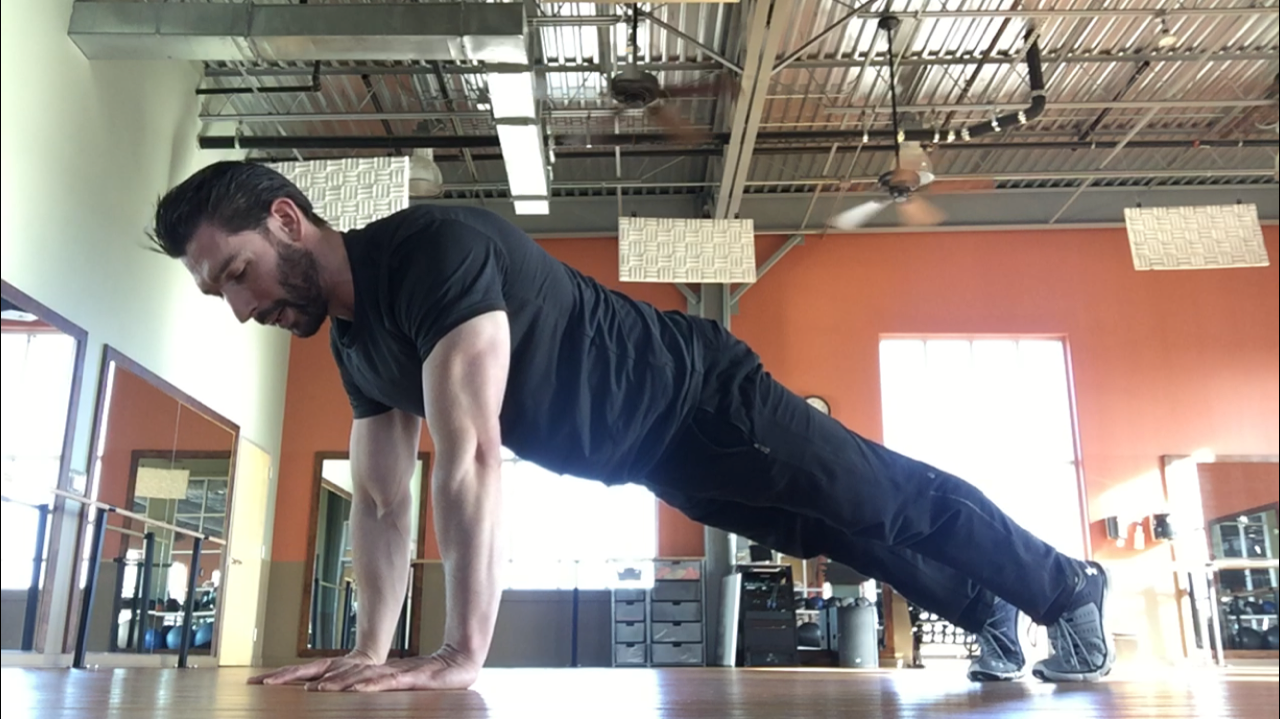When basic crunches aren’t enough for your workout routine let’s look at some alternatives that will optimize your core strength and increase your balance and ability to generate power.
*And if you want to do crunches, think about your back staying straight and sitting up onto your tailbone.
By now you probably know that your core is more than just your abs.
It’s the trunk of your body that both stabilizes you and also allows you to rotate around with control. And applied correctly your core also braces your spine to protect it from any unsafe movements that could harm your central nervous system. Another thing I think is important to understand about your core is that it is the foundation that all of your extremities attach to. So while your legs allow you to run, and your arms are swinging a golf club around, these extremities attach to the trunk of your body and need its support in order to move effectively. These extremities are attempting to generate power when they do certain things, whether it’s kicking a ball, swinging a bat, or throwing a Frisbee; and the strength of your core will determine how much power they can generate and then transfer to your movement.
Planks
A staple of core strength is going to be a plank. Whether it’s performed with your hands on the ground or your forearms on the ground, a plank is a straightforward way to assess core strength. But once you’ve gotten control of your plank it’s important to start implementing the variations that will keep you getting stronger and also from getting bored. Side planks, performed on one arm or hand and with the hips facing out instead of down, are a great way to kick up the challenge level and add balance into the equation. From here you can then try tapping your hip to the ground to see if you can maintain your balance and control while moving. Try tapping your hip to the ground twice and then holding a side plank for two seconds, with a goal of being able to do this ten times on each side.
Dead Bug
Dead Bug is a great flip on the traditional plank for people who are beginners and can’t maintain a plank, but also for people who struggle with stabilizing their back and keeping it from arching or rounding. Appropriately named for the way dead bugs tend to look, you lay on your back with hips and knees bent to 90 degree angles. With your arms pointing up to the sky, hold an object against the front of your knees; a stability ball, a big pillow, whatever you can get your hands on and hold against your knees. Maintaining your back flat against the ground, extend an opposite arm and leg out away from the ball as far as you can control them before bringing them back up to the ball and switching sides. A good goal here is to be able to do this 20 times on each side.
Cable Rotations
If you have access to a cable machine then you can work on generating power as we mentioned earlier in more specific movements. In the same way you would swing a golf club or baseball bat, doing cable rotations will help you increase core strength and generate power in your movement. You will want to start off standing perpendicular to the cable machine, both hands gripping the handle and holding it at arm’s length in front of your chest. Keeping the handle out in front of your chest will help ensure that the emphasis is on your core and isn’t being taken over by your arms and shoulders. It helps to imagine that you’re in a glass tube, so you can’t rock forward or lean backward, you can only rotate around. Your goal here is to rotate your torso around pulling the cable with it and then controlling it back to the start position. Pick a weight that will allow you to do 20 to 25 reps on each side, each one mimicking the way you would swing an object, focusing on your ability to generate strength and power in that rotation.
There are probably hundreds of ways to train and strengthen your core, with crunches being just one of them. Just remember, core strength is about control and stabilizing, so you can protect your spine but also generate force. If you want to do crunches, think about your back staying straight and sitting up onto your tailbone. Rounding your back, the way most crunches are performed, is the opposite of how you want to train your body. Like always, know what you’re trying to do, focus on the muscle groups you’re trying to use, and don’t sacrifice your form and ability to keep yourself stable just to get in a few more reps. Quality over quantity will win out every time.



